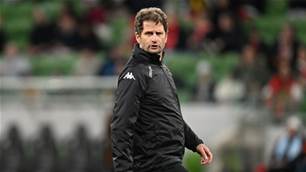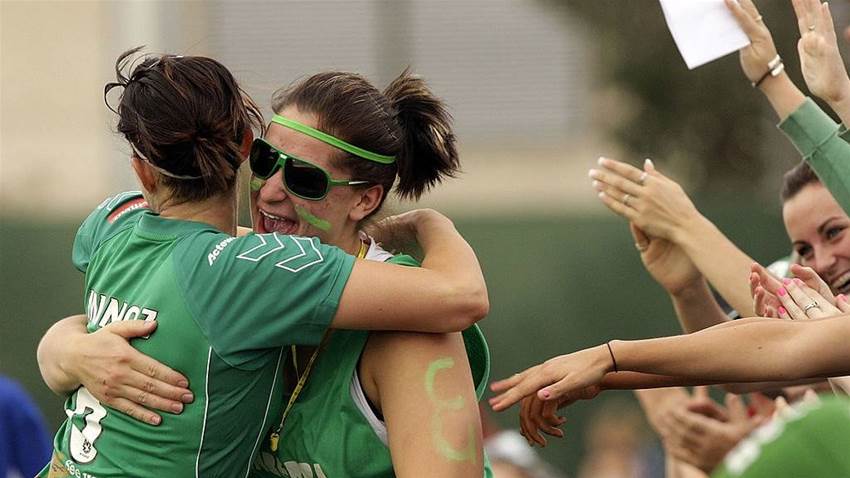265,000 more people watched W-League on television last year, while 305,000 less watched the A-League, according to Roy Morgan.
It's a hugely positive trend for women's football in Australia, with the premier domestic women's competition drawing a whopping 43% more viewers last year.
A record high 879,000 Australians watch the W-League on TV, up 265,000 (+43%) on a year ago, while the A-League attracted 1,748,000 viewers total.
At this rate of growth, the W-League would overtake the A-League within three years. This is without factoring in the huge advantage the A-League has in both number of games and number of teams, which will likely narrow as more clubs seek to expand into W-League franchises.
Admittedly, W-League TV ratings could slow over coming years given the rapid growth associated with the raising profile of the Matildas and an exodus of Matildas from the competition would nominally hurt the W-League brand.
But the awarding of hosting rights to the 2023 World Cup and the rapidly expanding profile of women's football generally will likely overcome many suggested drawbacks and Roy Morgan's figures show the room for the W-League to attract more female fans is exponential.
However these positives come within an overall decline in Australian football viewership that is particularly worrying for FFA given their move towards an independent ownership of their broadcast rights, in light of Fox Sports' shift away from football.
The A-League's TV ratings are in dire straights. Many games on Fox Sports since the competition's resumption have drawn less than 20,000 viewers nationwide.
This is reflected in Roy Morgan's data, which shows the competition lost 305,000 viewers last season - a 15% single-season decline - and dropped below the English Premier League (shown on Fox rivals Optus Sport) for the first time.
Interesting to watch is how Optus Sport's decision to buy broadcast rights to the English Women's Super League, which will now play host to the biggest Matildas names next season, affects the TV ratings for the W-League.
The A-League's TV ratings have never recovered since Fox Sports lost rights to broadcast EPL matches and while Fox Sports has never broadcast WSL matches, the W-League has also never faced stiff competition in its lifetime.
Between the men and women's competitions, A-League viewing figures have continued to drop substantially since the COVID crisis.
This creates a genuine possibility that the W-League, bouyed by both the national success of the Matildas and the vastly growing profile of women's sport, could overtake the competition - something virtually deemed impossible less than a year ago.
What gives this shift some real credibility is how much potential there is for an increase in female viewership for W-League matches. More men (547,000) than women (332,000) watch the W-League on TV – although female viewership (up 83% on a year ago) is growing faster than male viewership (up 26%).
Despite the palpable shift in broadcast metrics, the physical fan attendances between the two competitions still remains a mile apart.
The W-League's average attendances dropped below 2,000 per game last season, while the A-League's attendances dropping to just over 8,000 per match. Unfortunately for the A-League, traditional powerhouses Western Sydney Wanderers and Sydney FC now barely register over 10,000 average fans through the gates.
Roy Morgan were quick to put the future success of the W-League onto the success of the Matildas.
"The Matildas have become one of Australia’s favourite national sporting teams in recent years and their success on the pitch is translating into increasing interest in the local W-League in Australia where most of the Matildas play," Roy Morgan Industry Communications Director Julian McCrann said.
“The W-League’s increasing TV viewership goes against the trends evident for men’s soccer in Australia. There are now 879,000 Australians who watch the W-League on TV – up a stunning 43% from a year ago – and both women and men are driving this growth. The increasing popularity of the W-League will receive an enormous boost over the next three years as Australia gets set to host its first World Cup – the 2023 Women’s World Cup with joint hosts New Zealand.
“At present the COVID-19 pandemic is having a devastating impact on all sports in Australia as leagues are suspended or played behind closed doors without spectators. Local competitions are slowly welcoming spectators back but the new financial realities mean sports face crucial choices about where to allocate scarce funds for future growth.
“In this fragile investment climate women’s sport is set to be a future avenue for growth. The rise in TV viewership for the W-League mirrors the trends seen in other women’s sports such as AFLW – which also increased in popularity over the last year in a competitive sporting marketplace.
“For the best commercial returns during the coming decade Matildas’ star players such as Sam Kerr, Emily van Egmond, Steph Catley, Elise Kellond-Knight and others may represent the best bet for a post-COVID-19 sporting recovery.”
Related Articles

Leckie seals new marquee deal as Good, Maclaren head to Asia

'Timing not right': Montemurro's verdict on Matildas vacancy













